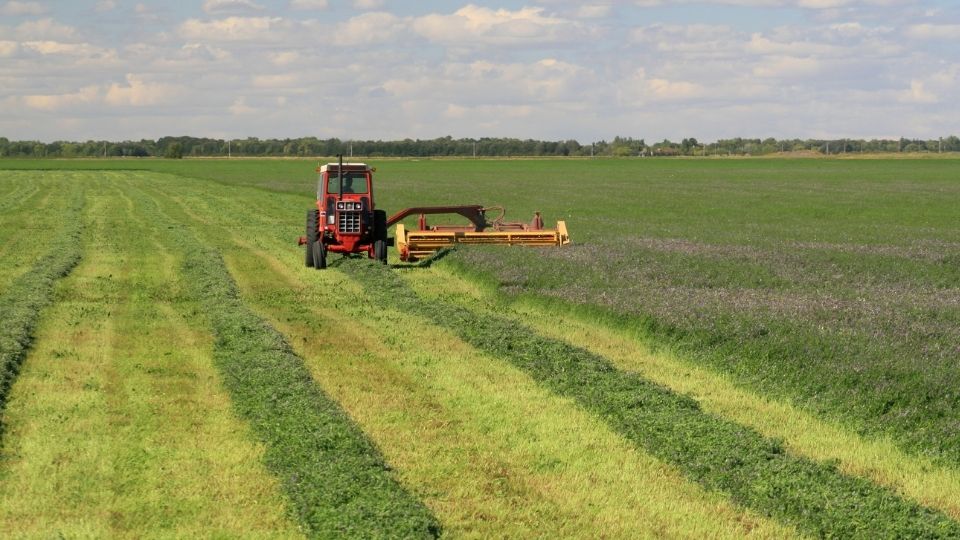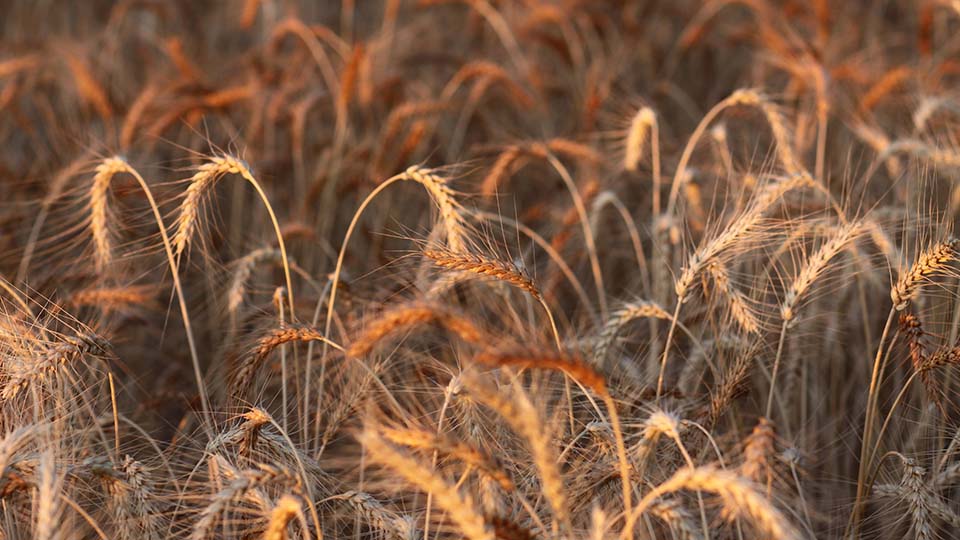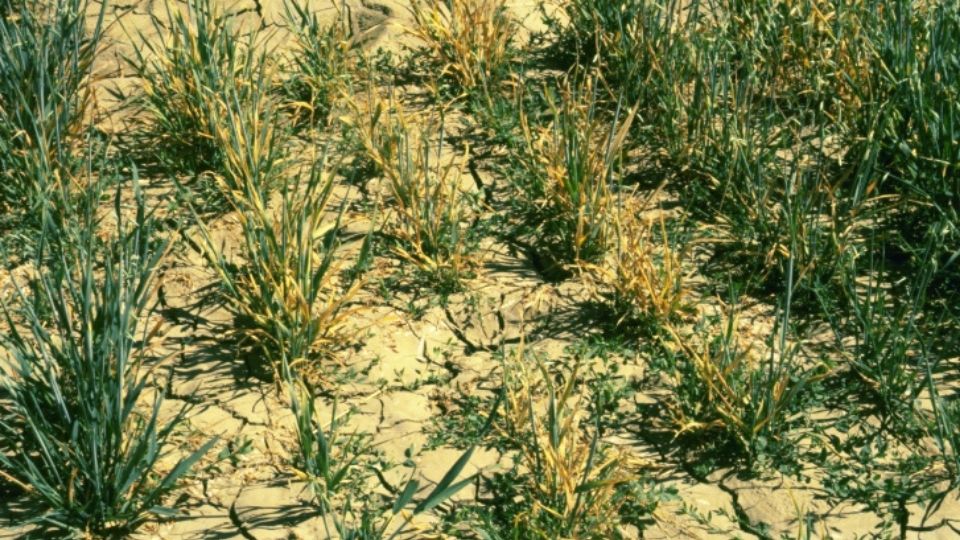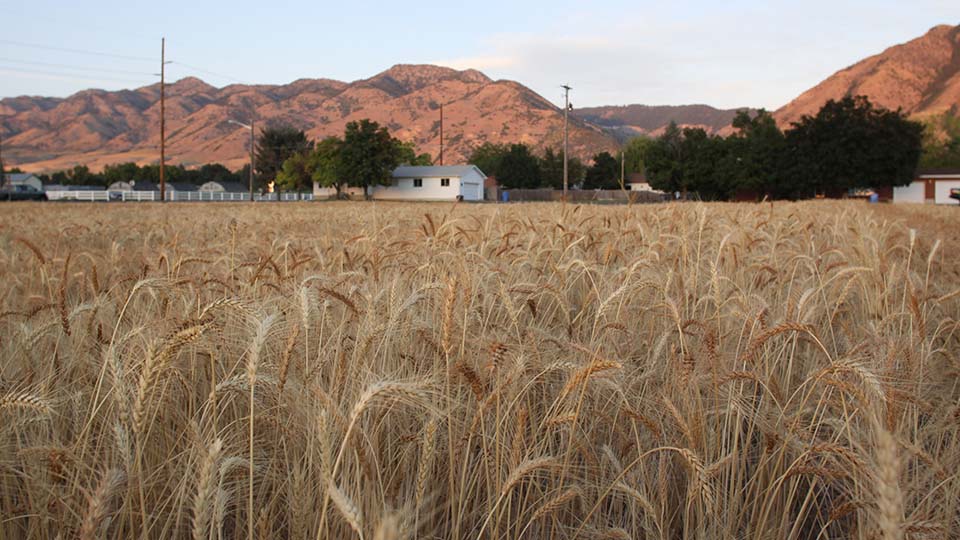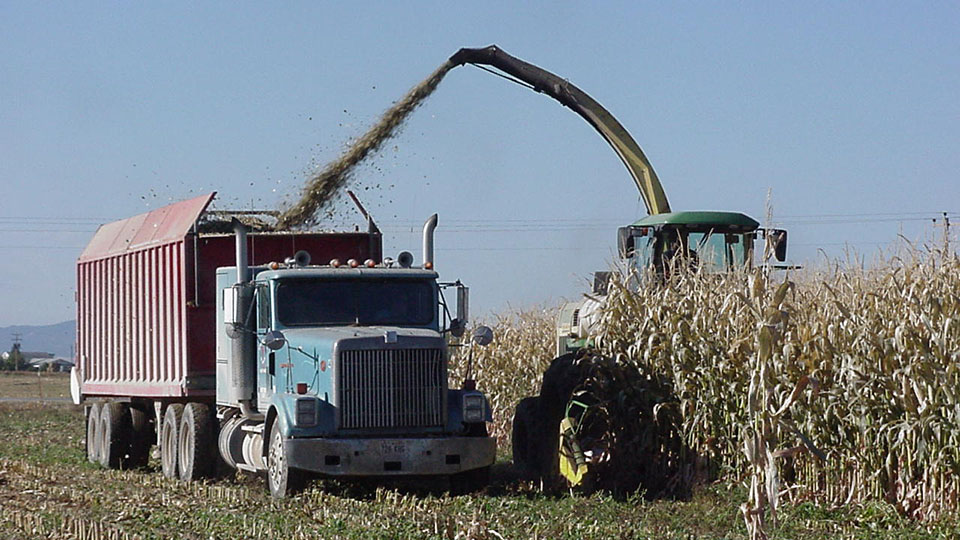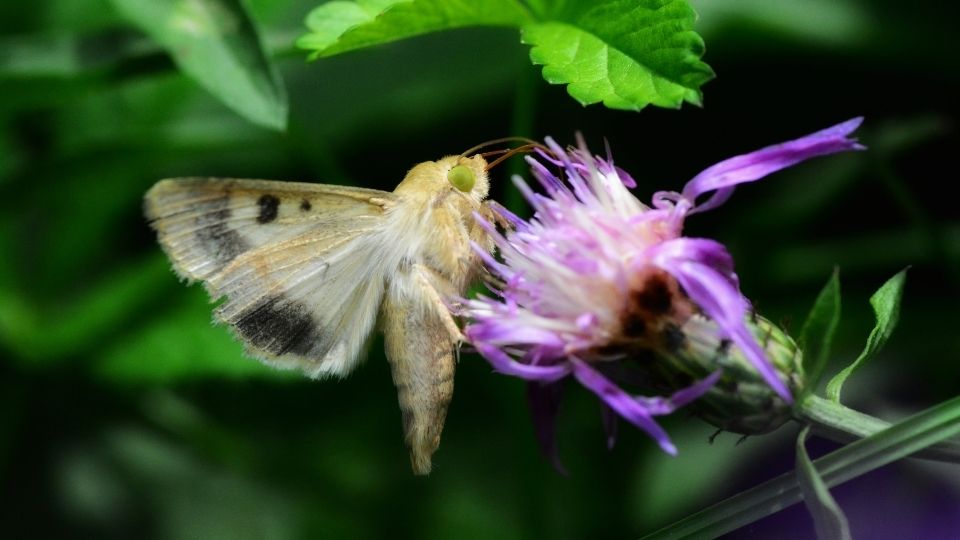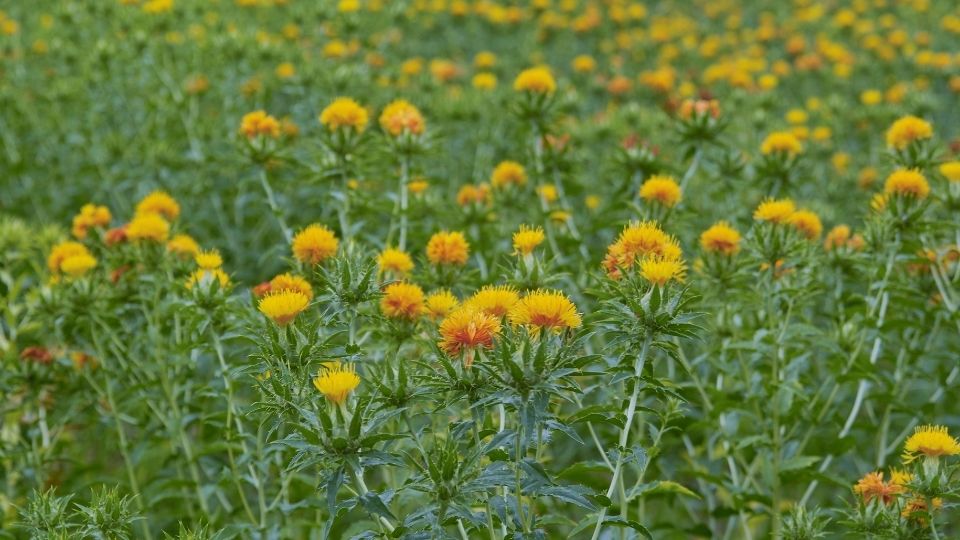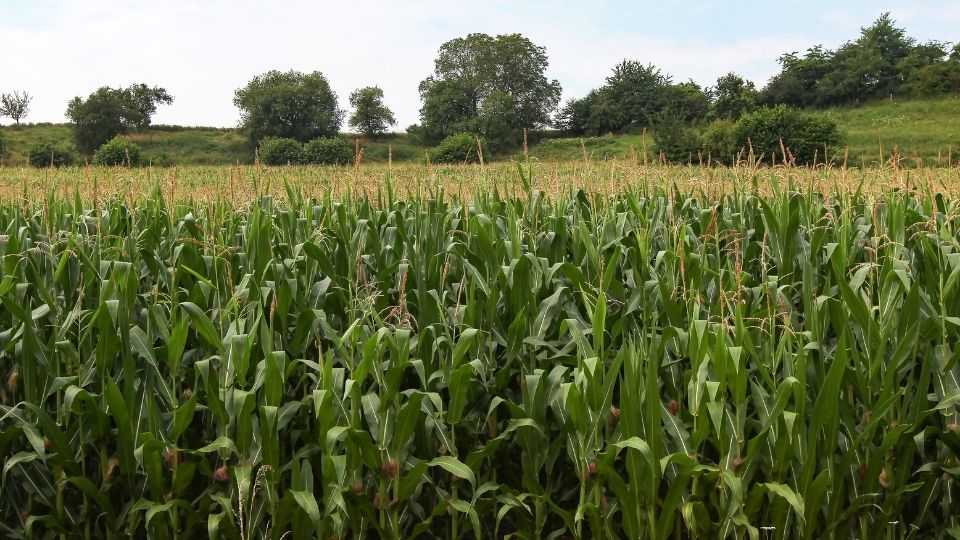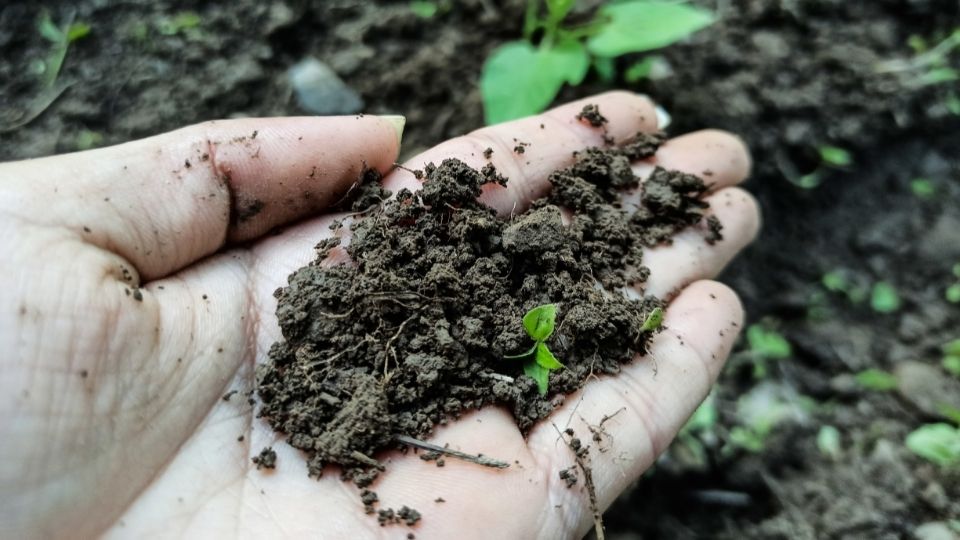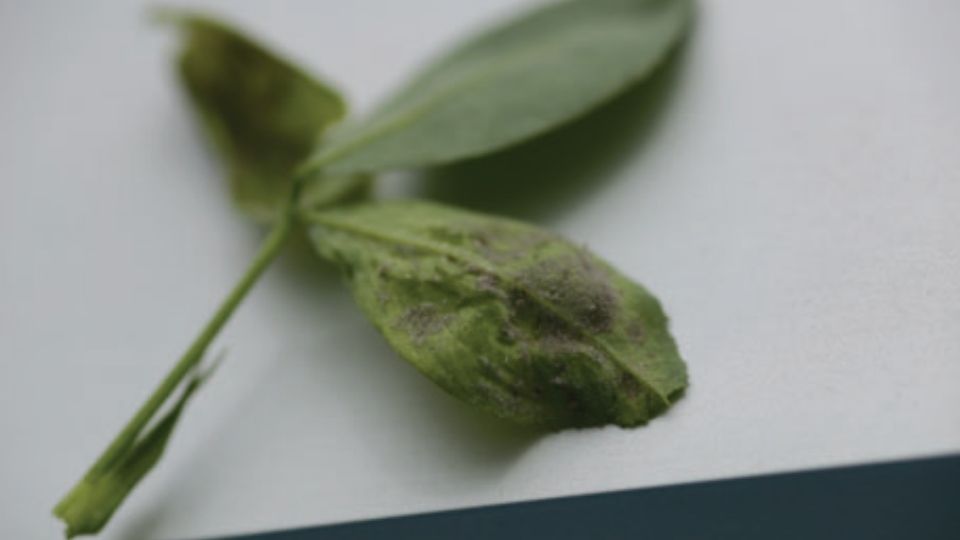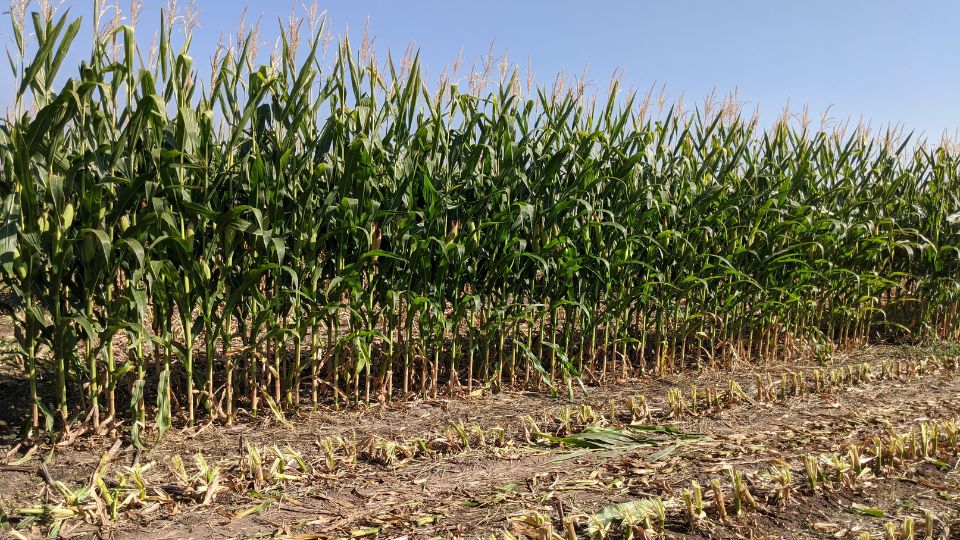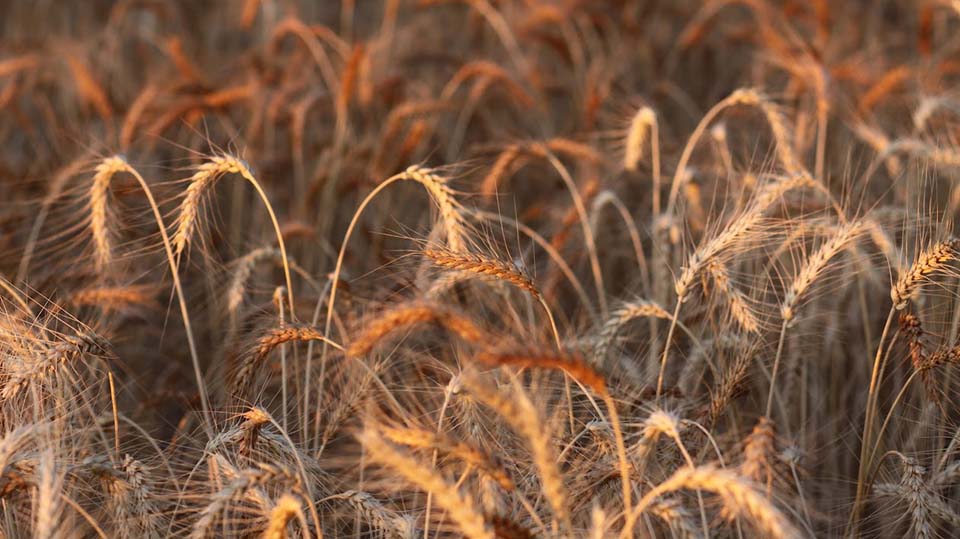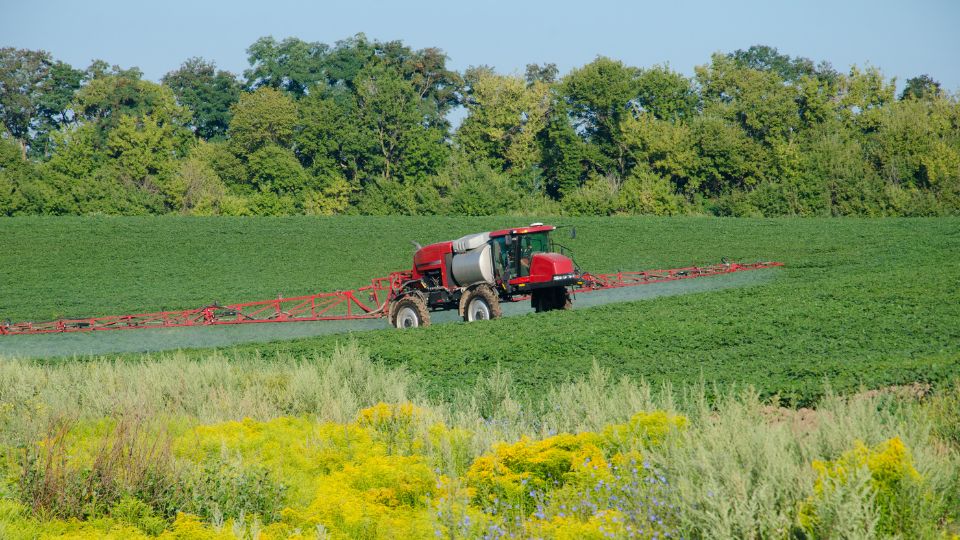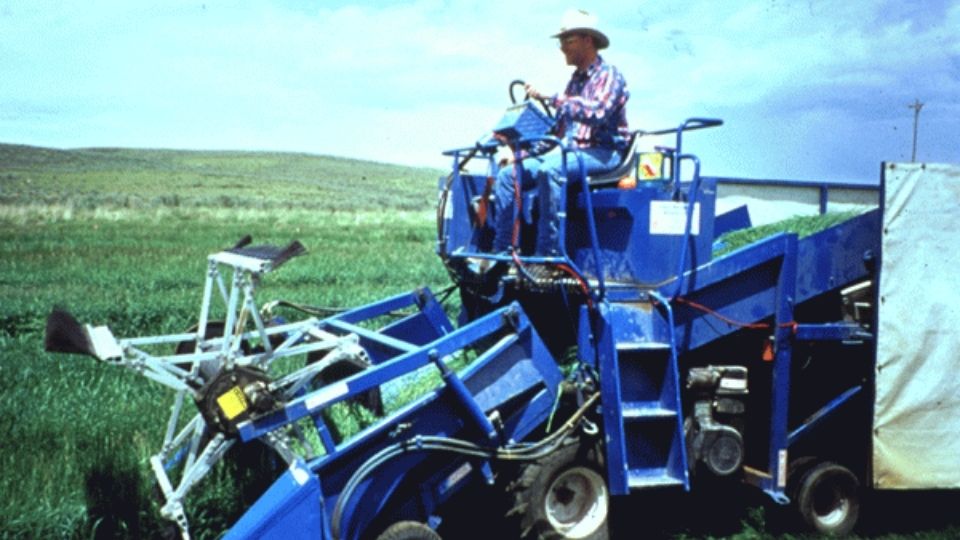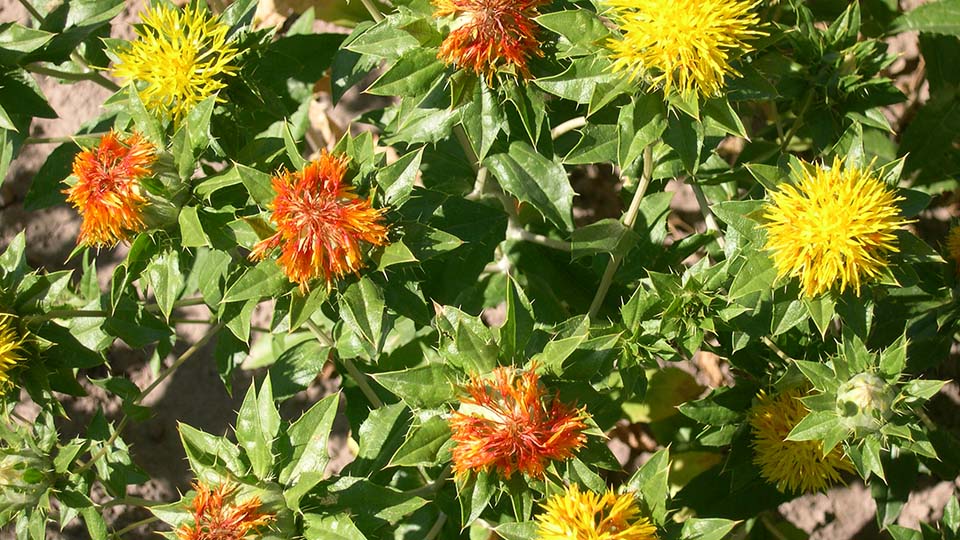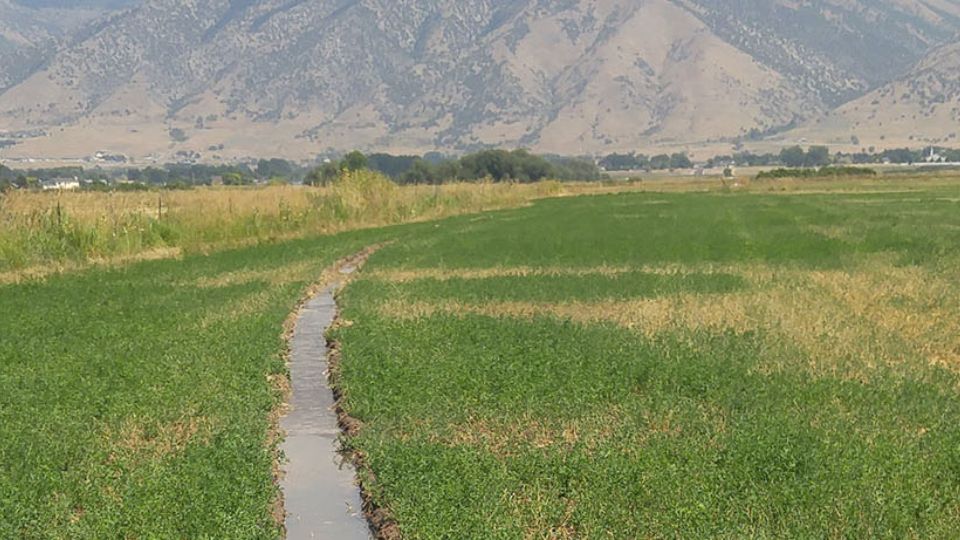Snow Mold on Small Grains

What You Should Know
Snow molds are diseases caused by fungi that attack small grain crops under snow cover or in cool, wet weather. There are three important types of snow mold fungi that can infect small grains (wheat, barley, and rye) in Utah and they can occur together on the same plant. The symptoms for the diseases can look similar. Some cultivars have good resistance to the snow mold fungi whereas other species are less resistant. This disease can be managed by cultural practices including disease resistant varieties and seeding date, which will allow the crop to recover in most cases.
Introduction
Snow molds are diseases caused by fungi that are classified as psychrophilic, or cold-loving, and will attack plants under a layer of snow. The snow cover provides the fungus with a dark, humid environment suitable for their growth. When plants are covered with a layer of snow, their photosynthetic capabilities are impaired and the plants will slowly lose carbohydrates and protein reserves which predisposes them to infection by snow mold fungi. Snow mold fungi are nonspecific pathogens, meaning they don’t infect a specific plant species, and can occur together on the same plant. Cereals such as wheat, barley and rye are susceptible to snow molds. For cereals the important fungi in Utah are Microdochium nivale (pink snow mold), Typhula species (gray snow mold) and Sclerotinia borealis (Sclerotinia snow mold).
Symptoms
Symptoms of snow mold infection are best seen by looking at plants right after snow melt (Figs. 1 and 2). A cotton-like growth (mycellium) is present and may appear slimy on living or dead plants. Dead leaves are common: however, damage can be variable. Leaves can be partly necrotic, flac- cid, or rotted, and the whole plant can be killed if the crown is infected. Snow mold symptoms can be differentiated from win- ter-injured plants based on where the damage occurs. Snow molds will damage plants that are in areas of snow cover. In contrast, plants damaged from winter injury will usually be on hills, icy areas or barren areas where snow cover was blown away. As long as the crowns are not infected, most plants will recover and produce satisfactory yields, even though there may be extensive leaf damage.
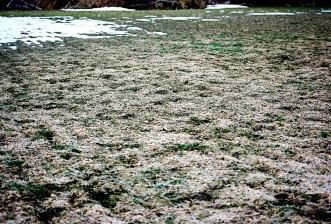
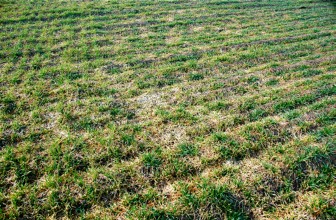
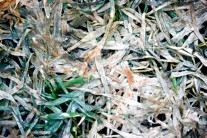
Symptoms of all three snow molds may be similar, but there are some characteristic symptoms for each disease. Small grain plants infected with pink snow mold have chlorotic and dry, necrotic leaves. A diagnostic feature of this fungus is the mycelium with a pink color and sporodochia that are pres- ent once the snow has begun to melt (Fig. 3). A seedborne phase of this disease can cause seedling blight and reduce germination by 50%, but does not cause visible symptoms typically associated with snow mold. Leaves infected with gray snow mold will have a dense layer of gray- ish-white mycelium and are easily shat- tered. A diagnostic feature of this fungus is the presence of dark sclerotia that are found scattered within the mycelium, which gives the plants a speckled appearance. Sclerotinia snow mold (also known as snow scald) usually occurs in isolated patches. Symptoms on leaves appear in the spring, with dead plants and leaves having a gray, thready appearance. Numerous dark-colored sclerotia are present on the diseased tissues.
Disease Cycle
Pink snow mold is less dependent on cool tempera- tures than other snow mold fungi; therefore snow cover is not required for this disease. The fungus can attack all parts of the plant when the weather is cool and wet in fall and spring, leaving lesions on the leaves (Fig. 4). The fungus survives in residue of plants that were previously infected. In the fall, wheat plants are invaded by hyphae or from spores (Fig. 5) or mycelium from host debris. Inoculum can also originate from perithecia (the overwintering structures) borne from reisdue. The fungal hyphae will grow from infected residue and pen- etrate leaves of healthy plants and continue to grow as long as snow persists. Initial infections begin in the leaf sheaths and blades near soil level. The infections spread as the mycelia expand in cool, wet weather or under snow. Additional infec- tions can be caused in the spring when airborne spores land on other plants and cause infections in aerial plant parts.
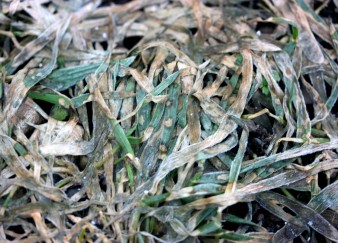

Gray snow mold is more dependent on snow cover than pink snow mold. The sclerotia produced by the fungus germinates in the fall and produces mycelia or a basidiocarp that produces spores, which are forcibly ejected and become airborne. Wheat planted in the fall will be infected by either the spores or by hyphae from the sclerotia present in the soil.
Sclerotia from Sclerotinia snow mold also germinate in the spring, similar to gray snow mold, but produce different structures (apothecia). These structures are lined with spore sacs from which spores (ascospores) are forcibly ejected and become windborne. Infection of Sclerotinia snow mold occurs as described for gray snow mold.
Diagnosis
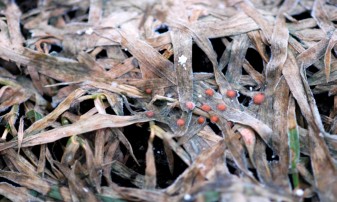
To be sure that snow mold is the problem in your cereal crop, symptomatic plants can be sampled and checked for the presence of the fungus. Your local county Extension agent may be able to do this for you as they often can provide diagnoses quickly and accurately. If confirmation is desired, the sample may be sent to the diagnostic laboratory. To do this, collect several plants exhibiting symptoms of infection. Plant tissues should be sealed in a plastic bag and sent to the: Utah Plant Pest Diagnostic Lab, Department of Biology, 5305 Old Main Hill, Logan, UT 84322. Care should be taken not to expose the bag to excessive heat or cold so that the specimen and pathogen remain alive until the sample is received.
General instructions for sample collection and ship- ment can be found at: http://utahpests.usu.edu/uppdl/htm/ forms and directing your browser to the diagnostic laboratory sample submission information. It is recommended you seek diagnostic confirmation of disease as some microbial activity may not be disease, but can be harmless slime molds that can give the appearance of a more dramatic problem. Slime molds pose no significant threat to cereal production (Fig. 6).
Management
Early seeding may facilitate faster recovery of infected plants. By seeding early, the plants will be larger, and can tolerate the disease and recover in the spring better than late seeded plants. Late seeding will result in smaller plants that will most likely die when infected. Crop rotation with spring cereals or legumes will allow infected plant debris to decom- pose and for the sclerotia to die. Sclerotia are long-lived and 3 seasons rotation out of winter cereals may be needed. Weeds should be controlled during rotations because many grasses are susceptible to snow mold and infected weeds can provide inoculum for later crops. Blackening agents may be spread on snow to accelerate snowmelt, but may not be economically feasible. The best management method for gray snow mold is crop rotation with legumes. Legume crops will decrease the longevity of the sclerotia and the amount of inoculum present in the soil will decrease without a winter host.
Management recommendations are always influenced by current crop prices and other production influences, and may or may not suit an individual growers demands. Growers must weigh the costs and advantages of these recommenda- tions on a field by field, and year by year basis, and choose the options that best fits their situation.
Snow mold resistant wheat cultivars are the best method to control snow mold effectively and affordably. Culti- vars of winter wheat vary in their tolerance to the disease, but none are completely resistant and can be damaged. Cultivars showing good resistance include ‘Sprague’, ‘Eltan’, ‘Blizzard’, ‘Edwin’ and ‘Survivor’. The cultivars ‘Luke’, ‘Lambert’ and ‘Manning’ show some tolerance to snow mold. More suscep- tible cutivars include ‘Neeley’, ‘Meridian’ and ‘Promontory’.
These snow mold resistant cultivars of wheat may not be the highest yielding selections for Northern Utah’s climatic condi- tions. ‘Golden Spike’, a hard white winter wheat, has good resistance to snow mold and is more adapted to Utah’s wheat producing areas.
There are no known cultivars of winter barley that have high resistance to snow mold fungi.
References
- Wiese, M.V. 1987. Compendium of Wheat Diseases. APS Press, St. Paul, MN pp. 32-34.
- Mathre, D.E. 1997. Compendium of Barley Diseases. APS Press, St. Paul, MN pp. 18-20.
- Murray, T., Jones, S., and Adams, E. 1999. Snow mold diseases of winter wheat in Washington. Washington State University Pub. No. EB1880. Pullman, WA.
- Turner, W.J., Line, R.F., Yenish, J. and Chen, X. 2001. Crop profile for barley in Washington. Washington State University Pub. No. MISC0367E. Pullman, WA.
Published June 2008
Utah State University Extension
Peer-reviewed fact sheet
Authors
Erin Frank, USU Plant Disease Diagnostician; Kent Evans, Extension Plant Pathology Specialist; James Barnhill, Weber County Extension Agent; Mike Pace, Box Elder County Extension Agent
Related Research



